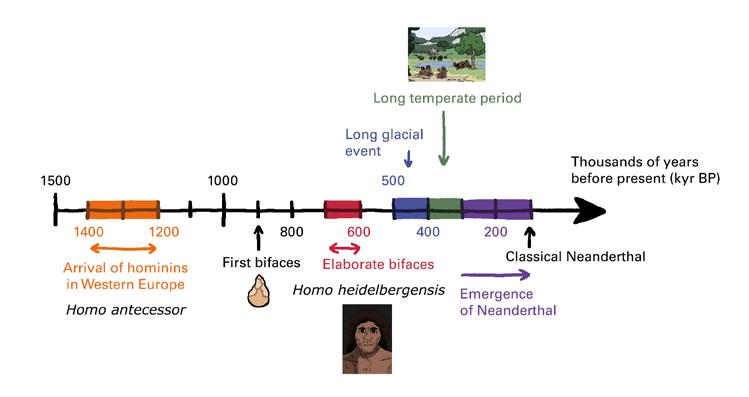
4 minute read
Editorial – What can we learn from past warm worlds for our future?
DEAR READERS,
We hope you enjoyed the first issue of PAGES Horizons in 2021. It has already been more than a year since that issue came out, and a lot has happened since then. Global change is ongoing! The Intergovernmental Panel for Climate Change (IPCC) published three new reports on the mechanisms, impacts, and mitigation of climate change, but the COVID-19 pandemic and global conflicts captured most of the governments’ attention. In the meantime, although the global CO2 emissions in the atmosphere decreased during the lockdowns around the world in 2020 and 2021, this trend has now reversed, pre-pandemic emission levels have already been exceeded, and evidence of accelerated global change has continued to accumulate.
Advertisement
At the beginning of 2022, humanity transgressed the planetary boundary for freshwater – our current consumption for agriculture, livestock, industry and all human activities in general is drawing on the essential stock of plants and animals on Earth, creating a risk for all living beings. In May 2022, the World Meteorological Organization issued a warning that there is a 50% probability that the 1.5°C (2.7°F) threshold for global average temperature, set in the Paris Agreement that was adopted by 196 parties at COP 21 on December 2015, would be surpassed at least once within the next five years. Even if the temperature does not exceed this threshold every coming year, even a one-year increase will likely have strong consequences for most ecosystems and people across the globe, particularly in the form of climate-related extreme events such as intense heat waves, megafires, or extensive flooding. Even if greenhouse gas* emissions in the atmosphere are reduced in the coming decades to keep global warming below 2°C (3.6°F), and countries pursue efforts to limit it to about 1.5°C (2.7°F), the lessons that we have learned from paleoclimatological and paleoenvironmental research tell us that the impacts of this global warming will continue beyond 2100. We will feel the effects for many centuries because of long-term feedbacks related to ice-sheet volume loss, which will lead to global sea-level rise, ocean circulation changes, and changes in the carbon cycle.
One of the main messages we hear from most governments, and many stakeholders, is that ecosystems will adapt, that we need to adapt, that we can adapt, that we know that humanity has always been able to adapt, because we are still thriving as a species today! For the IPCC, adaptation is “the process of adjustment to actual or expected climate and its effects”. It is true that plants, animals, and societies have already faced major climatic and environmental changes. However, those past crises did not occur without loss. The current climate change does not threaten the survival of our species, at least not in the next 100 years. But the IPCC also questions the ability of the most vulnerable populations to cope with additional warming beyond the current ~1.2°C (~2.2°F). At the local and regional levels, there are great disparities in terms of possible “adaptation” to climate hazards and the extreme climate events likely to come. Some regions of the world will be more affected than others by increased frequency of droughts and floods, sea-level rise, loss of sea ice* and biodiversity, and human migration. This is the first time ecosystems and humanity have faced such a significant climatic and environmental crisis. The causes and nature of this crisis, as well as the magnitude and speed at which it is occurring, are unprecedented in the history of the Earth, and we cannot be certain that all species will be able to adapt, or that all societies will be able to adapt. Future generations will inherit a planet very different from today’s, and how it has been in the past.
This second Horizons issue highlights warm periods that occurred on Earth in the past, and their causes and mechanisms, as well as some of the effects of warming during the past on some of the key components of the Earth system such as polar ice sheets*, sea ice, vegetation, and humans. Focusing on the topic “warm worlds”, we aim to put the current global warming into perspective. Exploring climate dynamics during warm intervals in the Earth’s history provides a unique opportunity to test what the notion of adaptation may involve, outside the limited present-day observation range, and across timescales that fit with climatic and environmental processes. Seventeen illustrated contributions, such as photo reports, comics, and interviews, provide different pictures of the past that show the exceptional nature of the current global warming. This demonstrates the urgency of restraining future levels of CO2 emissions to avoid climate warming that might no longer be reversible. This new collection of articles illustrates how we can picture the Earth in the past and learn from this history in order to change our future.
Boris Vannière, Nathaelle Bouttes, Graciela Gil-Romera, Emilie Capron and Sarah Eggleston











